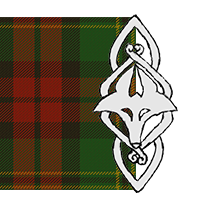Clan Martin began a migration from the area around Kilmartin, up the Great Glen, and settled around Loch Lochy, between the current cities of Fort William and Fort Augustus.
Early writings state that Clan MacMartin has inhabited the area around Loch Lochy since “very ancient times”. There were populations of Clan Martin in Letterfinlay, Invergloy, and GlenLoy, parts of Dochanassie, Stronaba and Mucomer/Mucomir. The ancient burial place of the MacMartin’s is located is at Cill ‘Icomar, at Achnanaimhnichean, on the eastern side of Loch Lochy, but was altered by the construction of canals through the area.
Later Clan Martin ancestors can be found in the Lothian area in the 12th Century, with the Court of William the Lion.
The associations of Clan Martin in Scotland are varied. In the western parts of Scotland, the Isle of Skye, and across the Irish Sea to Antrim, there is an historical affiliation with the Great Clans Donald, Ranald, McDonnell, and MacDonald. Farther north, with the Isles of Lewis and Skye, and parts of Ross and Cromarty, there is more of an affiliation with Clan Macleod.
The historical association was strongest with Clan Cameron and the Letterfinlay Martins, and whose histories are inexorably entwined. The chieftainship of Clan MacMartin was held by the MacMartins until the Highland Clearances began, and the heads of the Clan left for the United States and into North Carolina.
The Clan MacMartin were certainly Jacobite supporters. The MacMartins are said to have been amongst the most loyal and valuable followers of Lochiel. In the 1745 Jacobite uprising, the MacMartins were “out with” Lochiel’s regiment.
From the Lochaber historical archives there is a description of Clan Macmartin at the mustering of the clans at Delmacomer,early in 1689, under Bonnie Dundee, and here is a translation of the description of young Letterfinlay in the Grameid:—
“Here too is MacMartin the younger, rising high above his whole line. His dark locks hang around his face and cover his cheeks, and his eyes shine like the stars, while his neck rivals the white flowers. His father and a great force of dependants accompany him, and an illustrious company of his brethren in their ranks surround him on every side. He himself, in variegated array, advances with lofty mein. The garter ribbons hanging at his leg were dyed with Corycian saffron, and with the tint of the Syrian shell, as was his plaid. The crest of his helmet glows with floating plumes, and the trappings of his mounted powder horn gleam in shining brass. His sister had embroidered his tunic with the red gold, and a double line of purple went round his terrible shoulders. Mighty of limb, mighty in strength* he could uproot the old ash tree, or with his teeth alone tear away the hard iron. Whenever be turns his head and neck, his arms rattle, and the hollow rocks seem to moan, and as he treads the plain the earth groans under his weight.”
